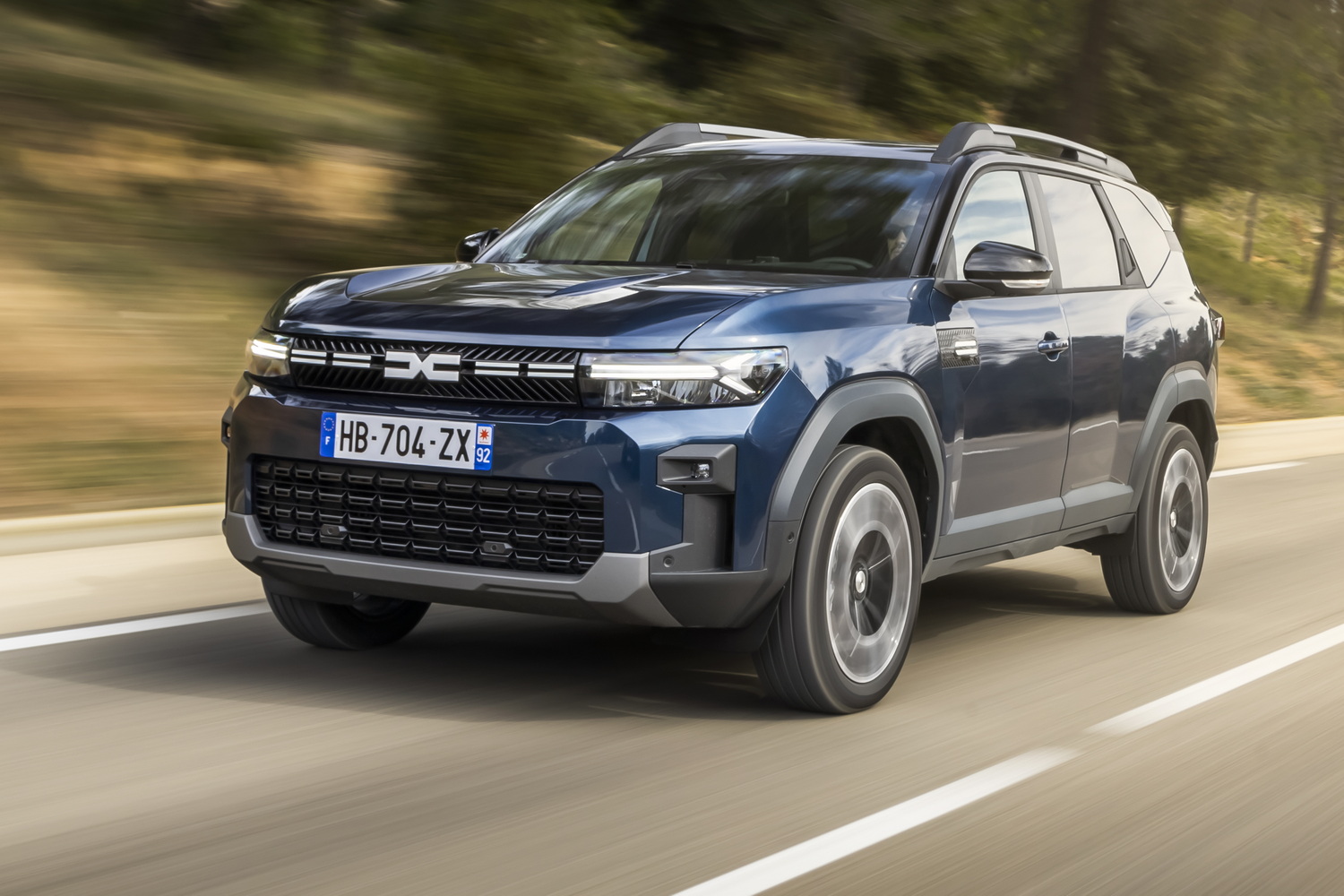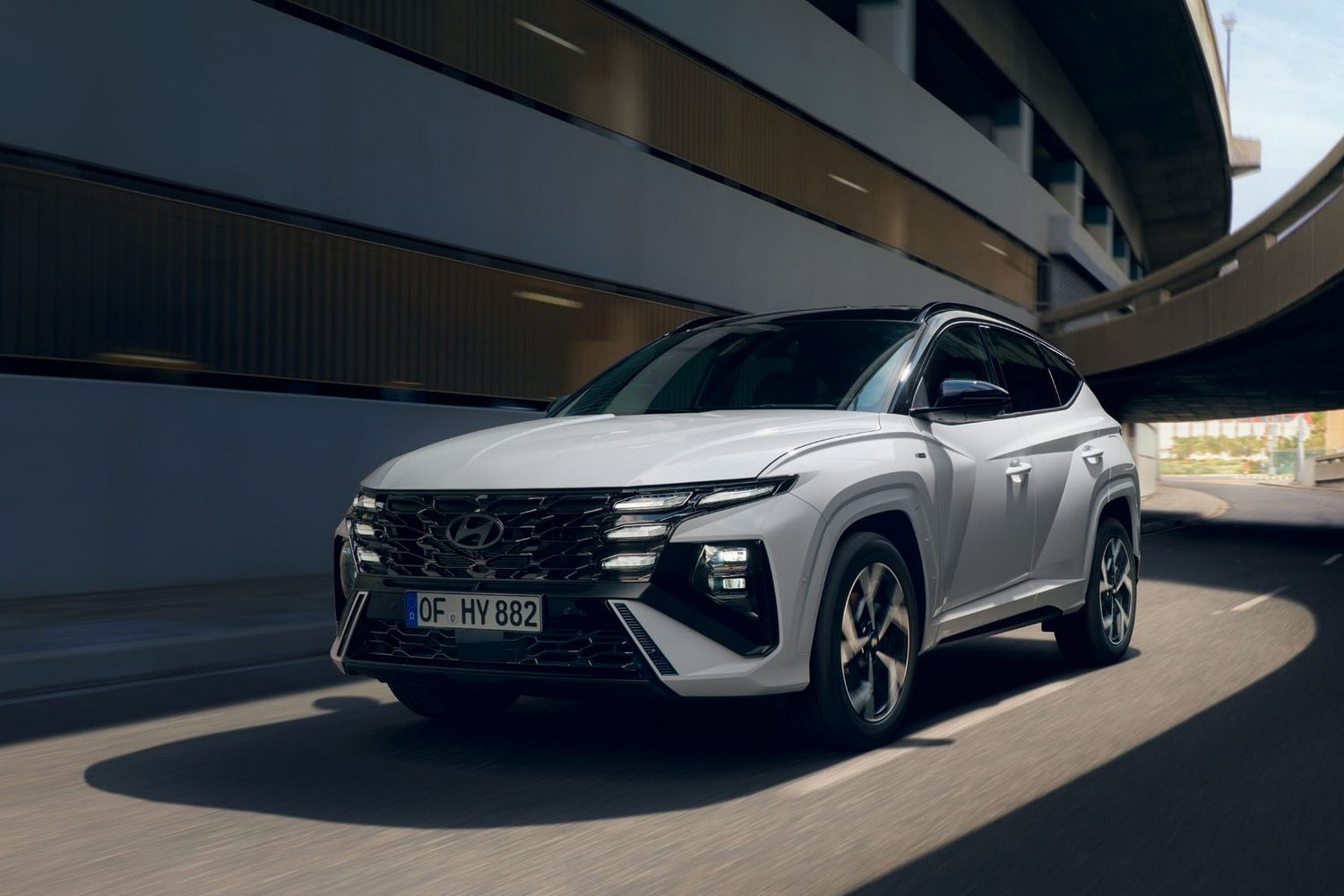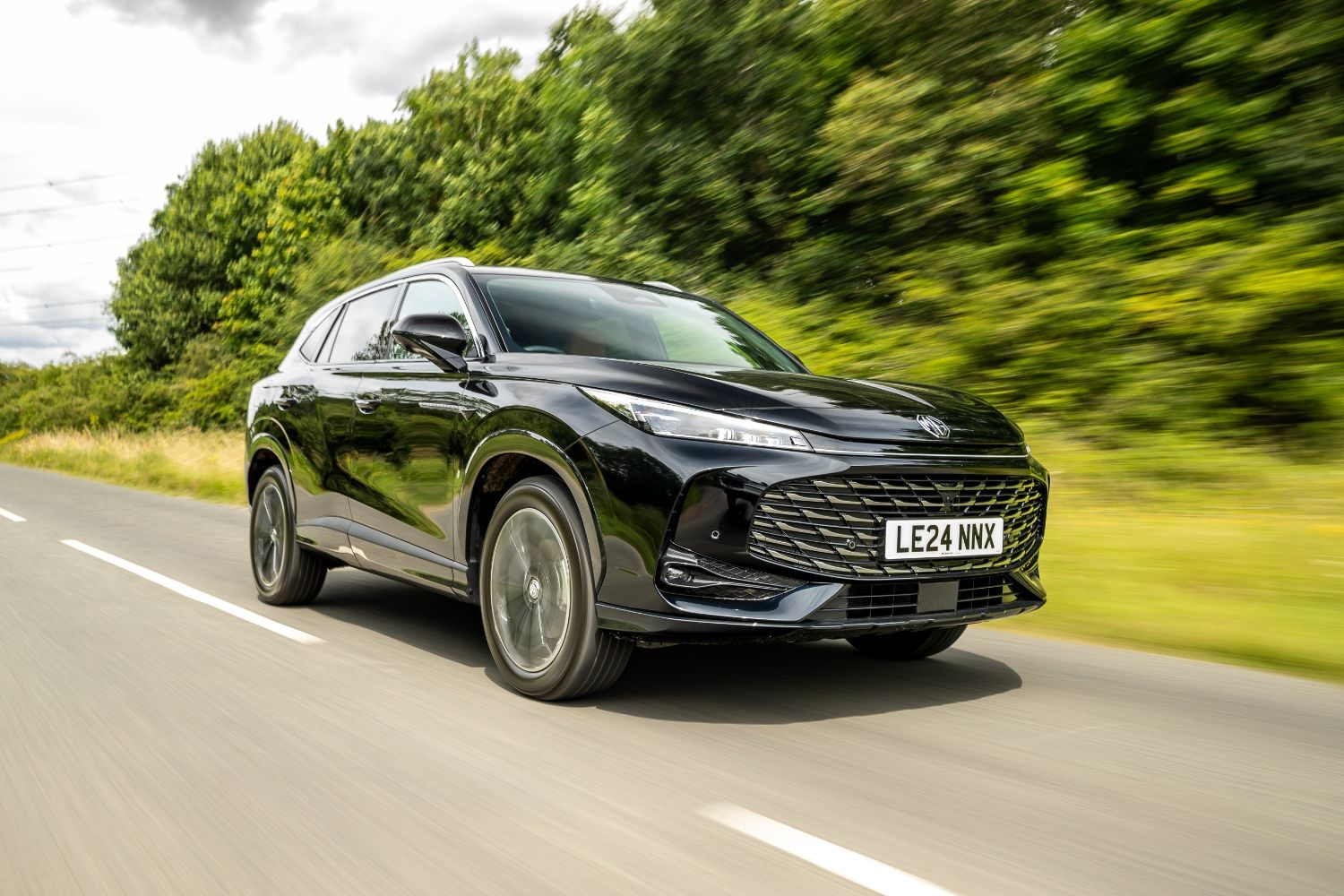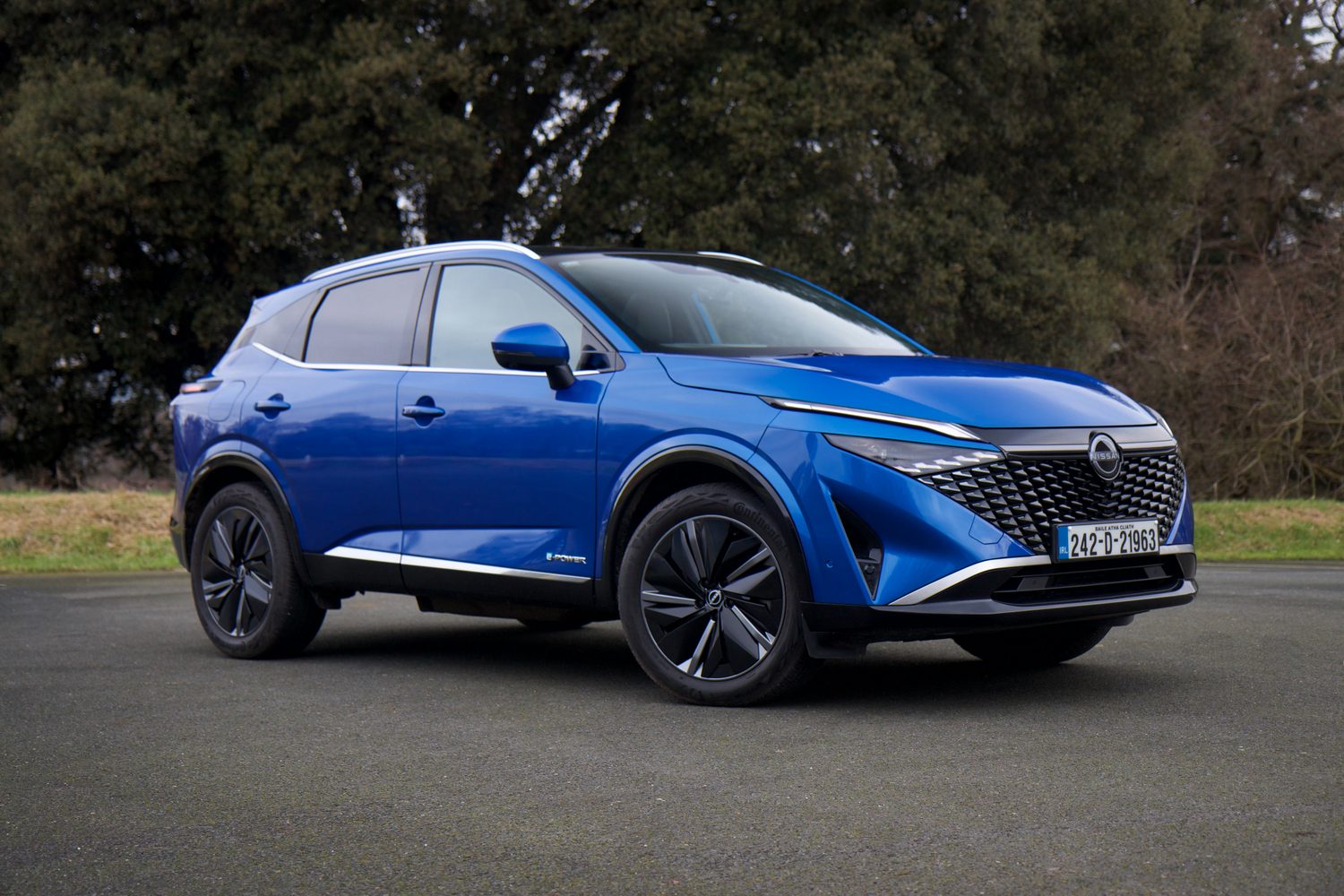Introduction to the 2025 Dacia Bigster
This is a big moment for Dacia - pun fully intended - as it moves up beyond its B-segment origins and for the first time (according to Dacia) sorties forth into the demanding lands of the European C-segment. That segment runs a big gamut, from the likes of a Volkswagen Golf hatchback up to chunkier family-sized SUVs such as the hugely popular Hyundai Tucson, Toyota RAV4 and Nissan Qashqai.
That opens up a potentially huge new market to Dacia, and a very profitable one at that. Three million C-segment SUVs are sold in Europe each year, representing 23 per cent of the total European car market. It's a dangerous place though - Dacia knows that customers shopping in this part of the market are more demanding than the B-segment buyers who've so far flocked to the likes of the Sandero (making it Europe's best-selling car in 2024 along the way), the Duster and the Jogger.
To succeed with the new Bigster, Dacia will have to work hard to inject a layer of sophistication not found in its other cars but do so without diluting the value for money that has made Dacia such a success.
In this, as in so many other areas, Dacia seems to have boxed cleaver: it polled a 400-strong group of German C-segment customers and carefully worked out where their purchasing red lines are and tweaked the Bigster's mechanical makeup and its equipment levels to suit. Hence, this is the first Dacia where an electric tailgate is an option, while you'll also be able to specify the likes of electric adjustment for the driver's seat - and the standard safety kit levels have seen an uplift.

Even the engine lineup has been tweaked for the Bigster, introducing more powerful versions of familiar powertrains, and those are - for the moment at any rate - unique to the Bigster, and won't be offered in other Dacia models.
Most of all though, Dacia has value on its side. Brand boss Denis Le Vot points out that in 2019, the average transaction price for a car like this, in Europe, was €29,000 - a price that the entry-level Bigster in Ireland almost matches. In 2024, that ballooned to €38,000 and so, as in the smaller Duster and Sandero segments, Dacia is betting that customers who are shocked at price inflation will flock to the Bigster and its superior value. Should they be happy to switch from pricier, more established models to a humbler Dacia? Let's see...
Pros & Cons of the 2025 Dacia Bigster Hybrid 155 Journey
Pros: Roomy cabin, comfort, huge boot, economy
Cons: Engine gets noisy at times
Exterior & Design of the 2025 Dacia Bigster
• 'Duster-Plus' styling looks smart
• Classy new colour and contrast roof options
• Biggest Dacia you can buy
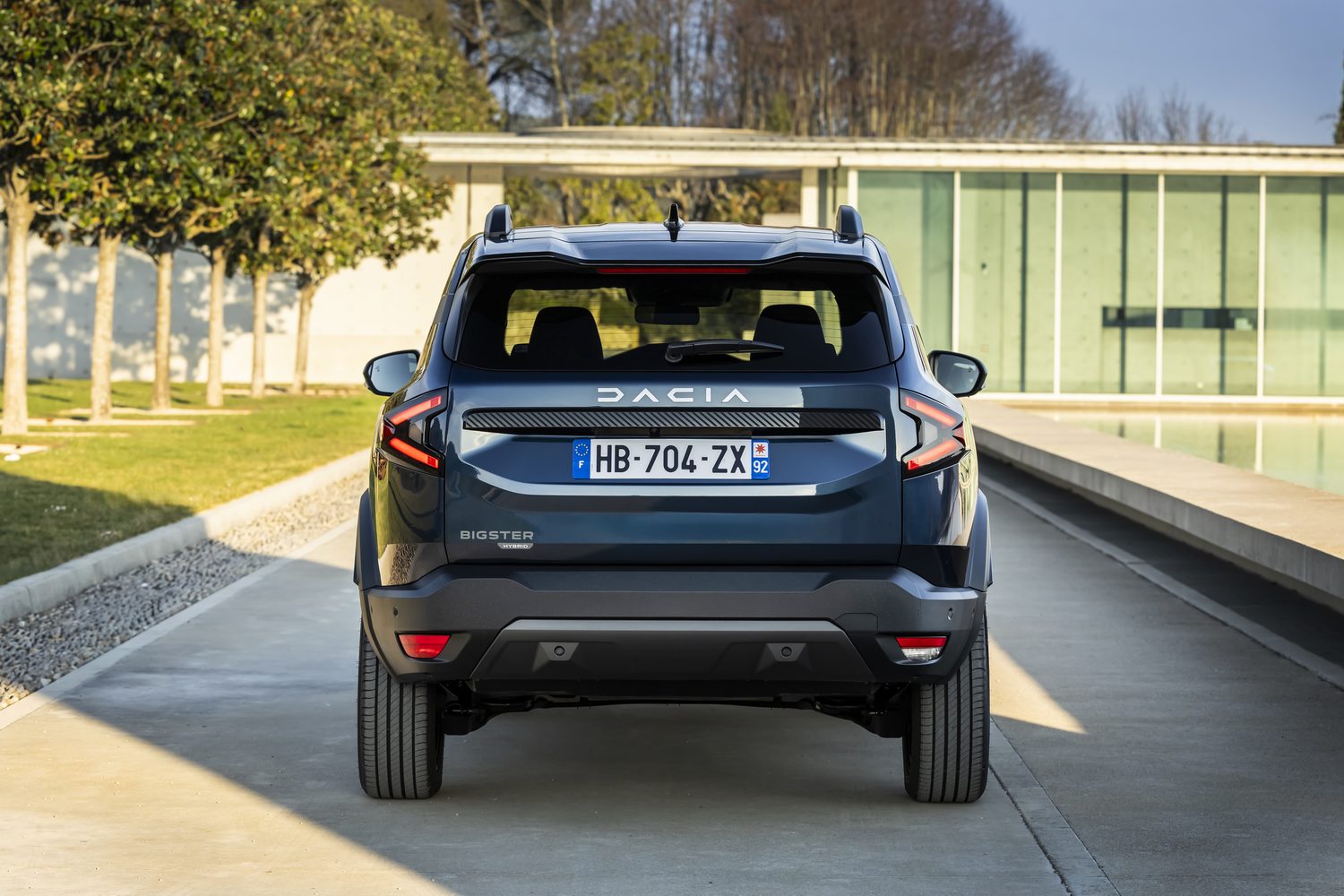
Dacia points out that its customers tend to buy their cars and keep them for a long time, hence why the brand has carefully evolved its styling, rather than making wholesale changes. So, there's nothing dramatically new here, and indeed the Bigster looks very much like what it mechanically is - a bigger, chunkier Duster.
The Bigster's dimensions are:
Length: 4,570mm
Width: 1,810mm
Height: 1,710mm
Wheelbase: 2,702mm
Dacia says that it has worked on the exterior style of the Bigster to make it a little more sophisticated, in line with buyer demand in this segment. There's a new, and very nice-looking, 'Indigo Blue' metallic paint option, and the Bigster can also be had with a contrast black roof, a first for Dacia.
While 17-inch alloy wheels will come as standard, there's the option of smart-looking new 19-inch rims for higher-spec versions, such as the Extreme and the Journey car we're testing.
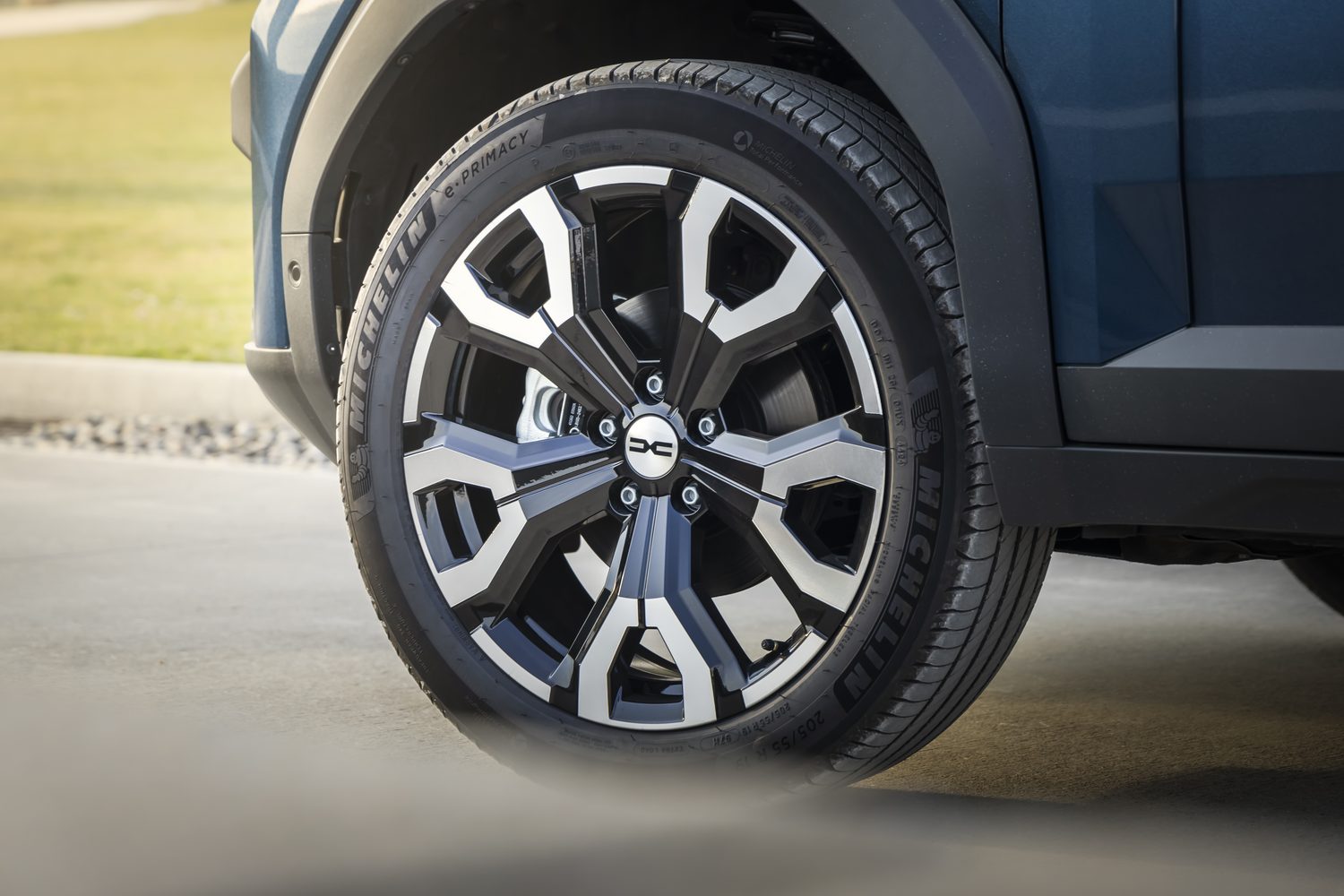
Overall, the Bigster looks smart - very much like a bigger Duster, with the same chunky castellated bonnet, Y-shaped LED light signatures and flat sides with gently bulging wheel arches.
Those arches are squared off and tipped with Dacia's 'Starkle' plastic, which uses 20 per cent recycled polypropylene and which has a faint grey-white fleck in the material. Starkle is painted in the mould, so you can't scratch it, and it protects most of the extremities of the Bigster from scuffing against boulders and trees when off-roading, or more pertinently from bashing against the edges of car parks when shopping.
There's also no exterior chrome - Dacia is one of the many brands ditching chrome on account of the environmental impact of the plating process - so the Bigster looks pleasingly no-nonsense.
Interior, Practicality, Tech & Comfort of the 2025 Dacia Bigster Hybrid 155 Journey
• Wonderfully comfortable up front
• Huge space in the back seats and boot
• Features 'YouClip' accessory points
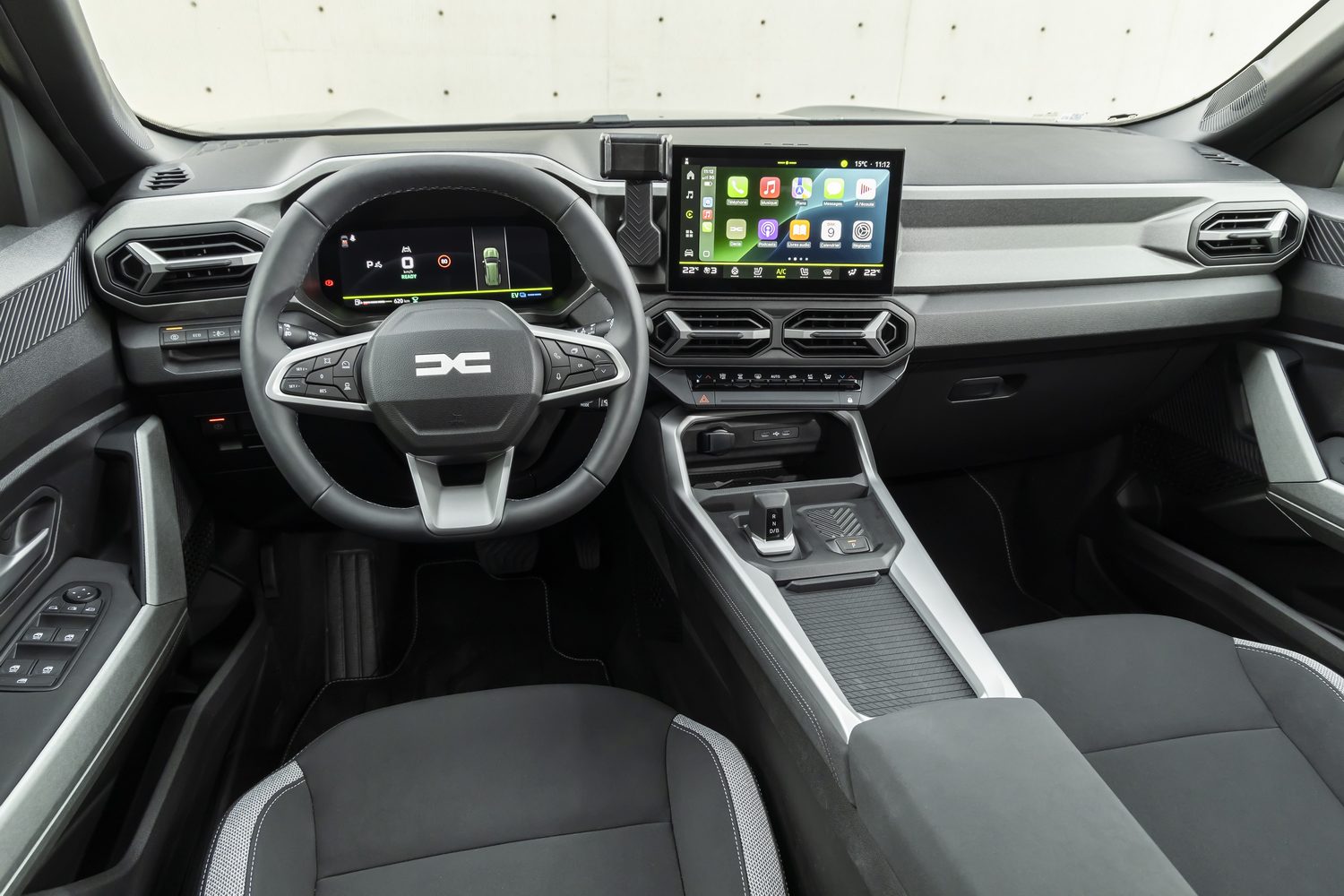
As soon as you sit into the Bigster's comfortable driver's seat, you know Dacia has done its homework. Unlike the smaller Duster (based on the same 'CMF-B' platform, incidentally), which has a slightly awkward driving position that's not ideal if you're tall, the Bigster immediately feels right. The seat is supportive and there's way more room for your legs and feet than you get in the Duster. The driving position is basically spot-on.
Dacia has also worked hard on making the Bigster's tactile contact points feel a little more upmarket. The slightly squared-off steering wheel feels good to hold, and the chunky toggle switch for the automatic gear selection is appropriately rugged with its hard-wearing rubberised surface.
There are still plenty of plastics in the Bigster's cabin, but as with the Duster, Dacia has added texture and surfacing to these so that they don't appear cheap. It's a neat trick and one that works well.

The Bigster is available with three different centre consoles in the front of the cabin, which are basically low, medium and tall. Our car came with the tall version, and it includes useful storage in front of the drive selector (also home to an optional wireless phone charger), two decent cup holders and a deep storage box under the centre armrest, which is chilled by the car's air conditioning. There are also decent door bins, but these are unlined so anything in there is going to rattle around a bit.
The Bigster also comes with five 'YouClip' attachment points in the cabin and boot, allowing you to add on extra storage accessories, and the company is currently running a competition for young designers to create the best new accessories.
The final four in the running are a boot floor cover that doubles as a handy tote bag; a combined dog water bowl, lead holder and poop-bag dispenser; an inflatable cushion that you fill with air by holding it up to an open window, and which rolls up for handy storage when not in use; and a bin with a sealed lid and a built-in plastic bag holder. There are also two extra optional YouClip points which attach to the backs of the front seat headrests.
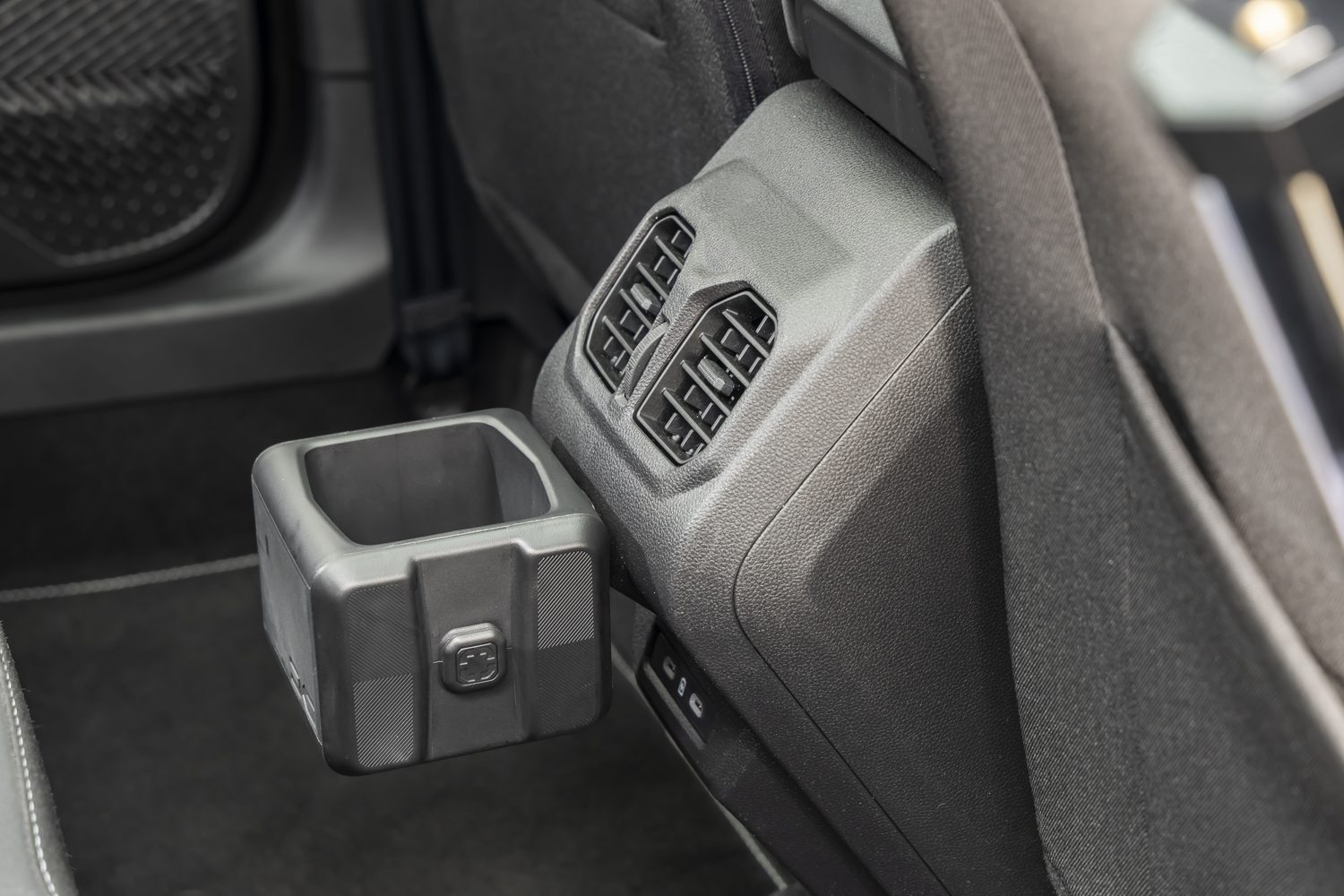
Space in the rear seats is excellent - Dacia boasts that there's 240mm of rear legroom, and certainly even your tall and bulky correspondent can get instantly comfortable in the back of the Bigster.
Headroom and legroom are significantly better than you'd find in the Duster, and there are larger side windows and an optional panoramic sunroof too, which make the rear of the cabin much airier.
There's a folding central section of the rear seat back which doubles-up as both an armrest (with cup holders and mobile phone holders built in) and a load-through for the boot.
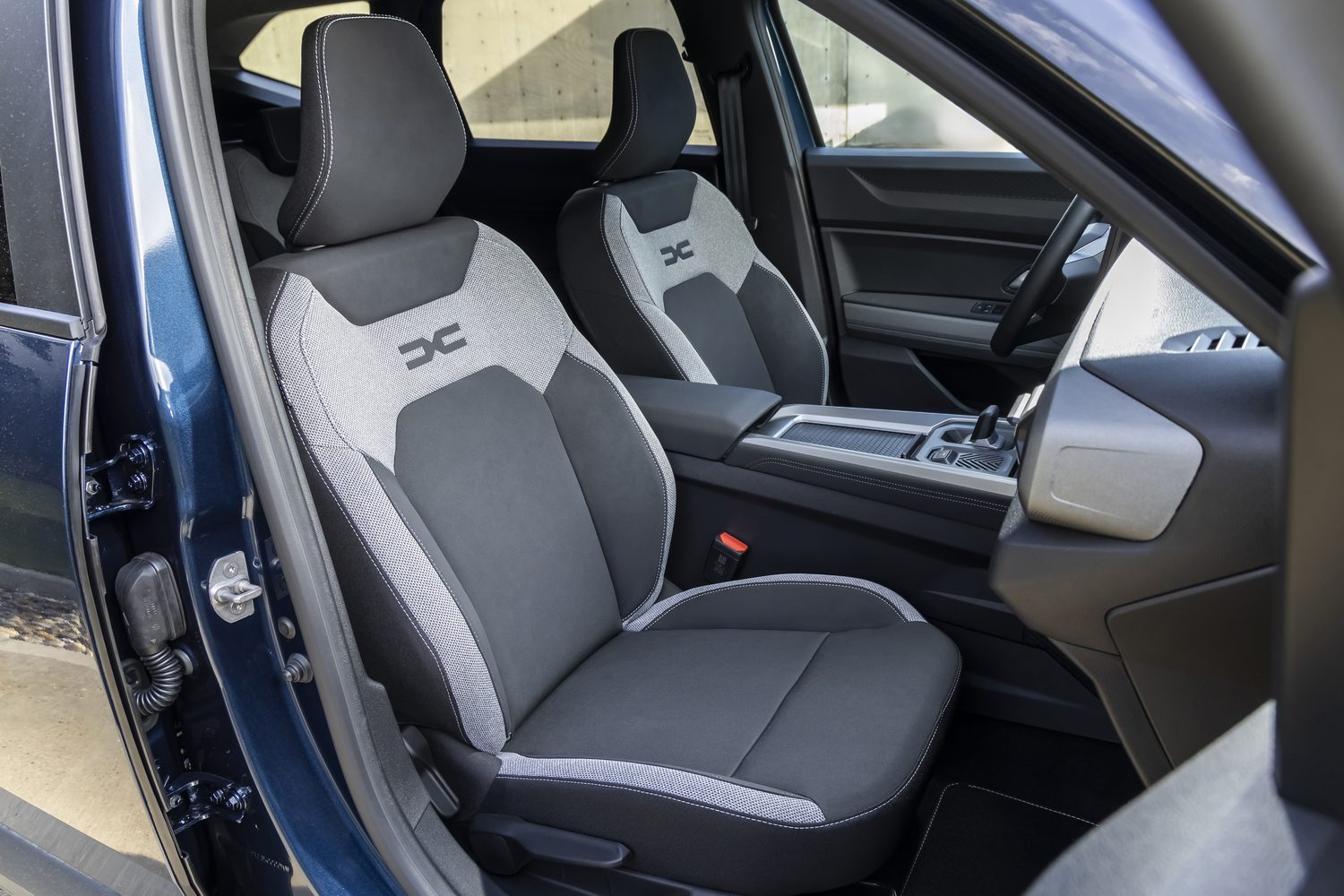
Rear seat passengers also get seatback pockets and door bins which are larger than the average. They also get nicely-appointed seat upholstery (as do those in the front, of course) which eschews leather in favour of, depending on the model, a soft tweed-like fabric, or a wipe-down neoprene-style material.
The Bigster's boot is absolutely massive. If you choose the entry-level front-wheel-drive model, powered by a mild-hybrid petrol engine, the Bigster's boot measures a huge 702 litres up to the retracting luggage cover. The hybrid version loses a bit of boot volume to its battery, but you're still looking at 612 litres, which should be enough for anyone.
Fold down the three-way-split back seats and there's 1,912 litres of cargo volume (or up to 2,002 litres for the petrol-engined car) which puts some vans to shame.
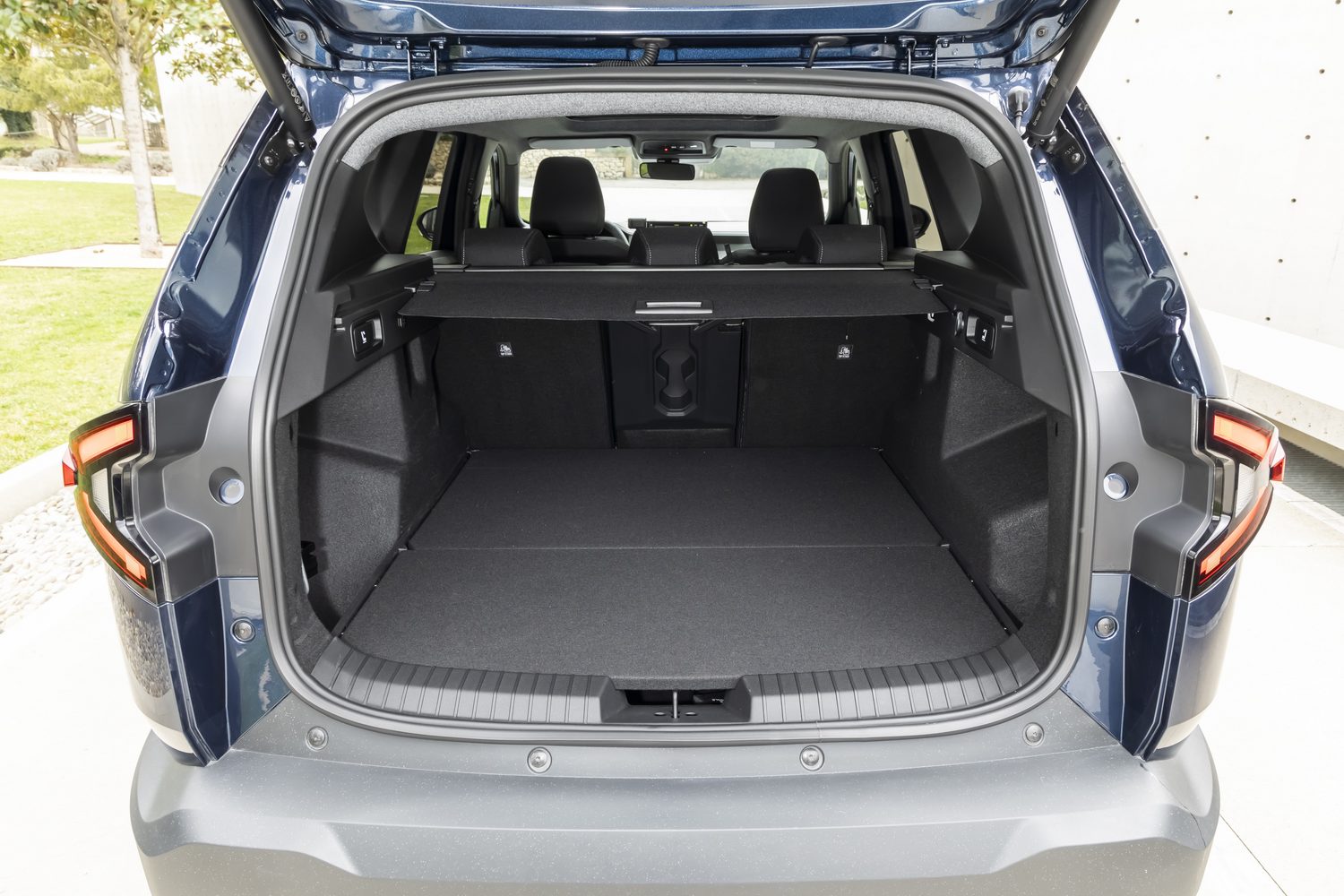
When it comes to technology, Dacia prefers to keep things simple. Indeed, Le Vot is generally scathing about the trend towards all-screen cockpits. Nonetheless, the Bigster does come with a 10.1-inch touchscreen infotainment system, the first Dacia to have a standard-fit screen.
The on-screen menu - rendered in green, black and yellow - is pretty straightforward and easy enough to use, helped immeasurably by the fact that Dacia uses physical air conditioning controls from Renault, which are very pleasant to use and much safer when you're driving.
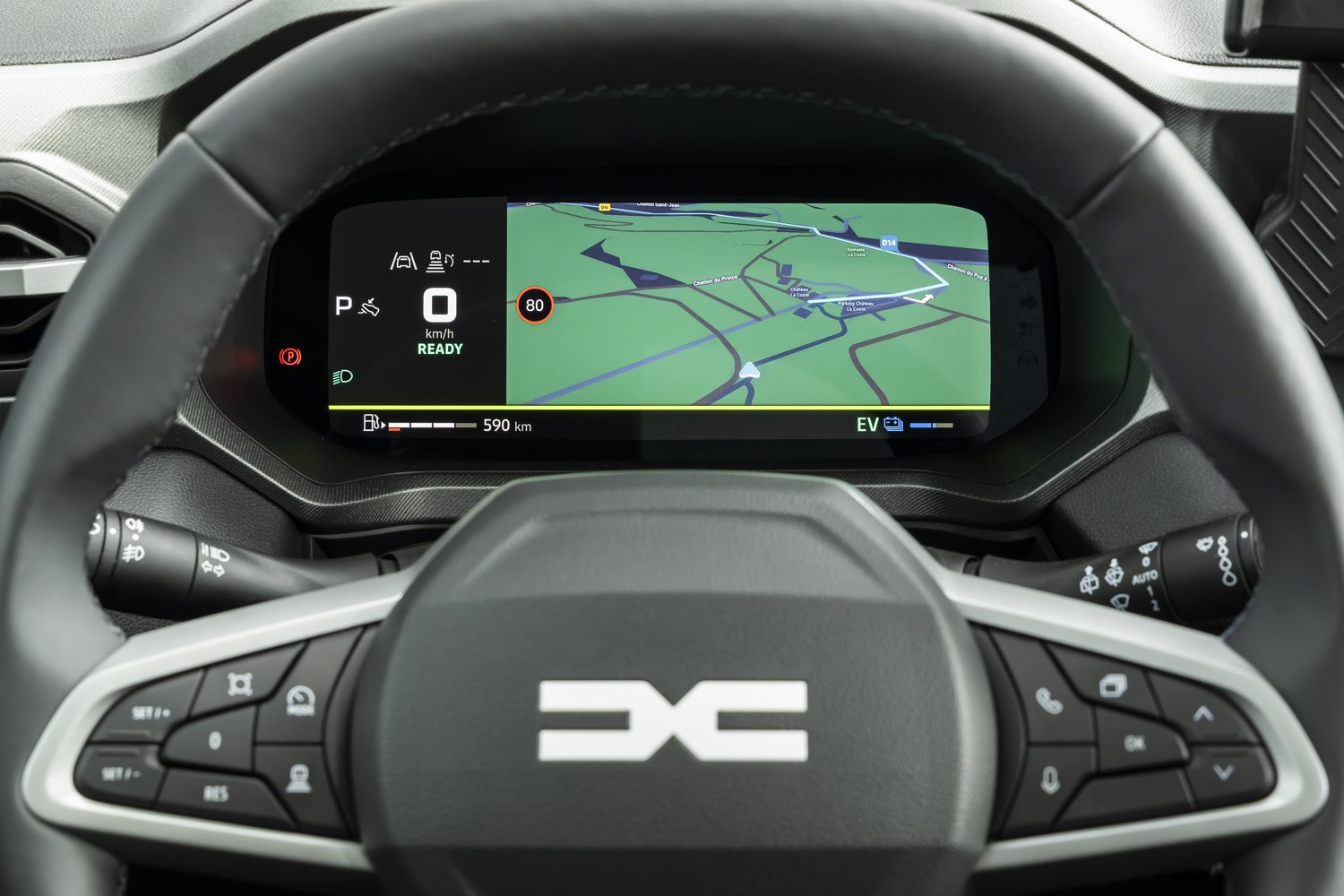
The screen does have Apple CarPlay and Android Auto connectivity as standard, and there's built-in navigation too for higher grades. The instrument panel is also digital, and that comes in either seven-inch or ten-inch sizes, depending on the specification. Again, it's a simple and clear setup that doesn't leave much room for customisation.
If anything, Dacia's tech is more impressive outside the car. There's a new augmented reality app, which not only allows you to spec and build your new Dacia in 3D, and place an avatar of the car onto real-world backgrounds as you do so, but there's a clever new system that scans your luggage and tells you the best way to load it all securely into the boot. There's also a route-planning system which can send instructions to the car's nav system.
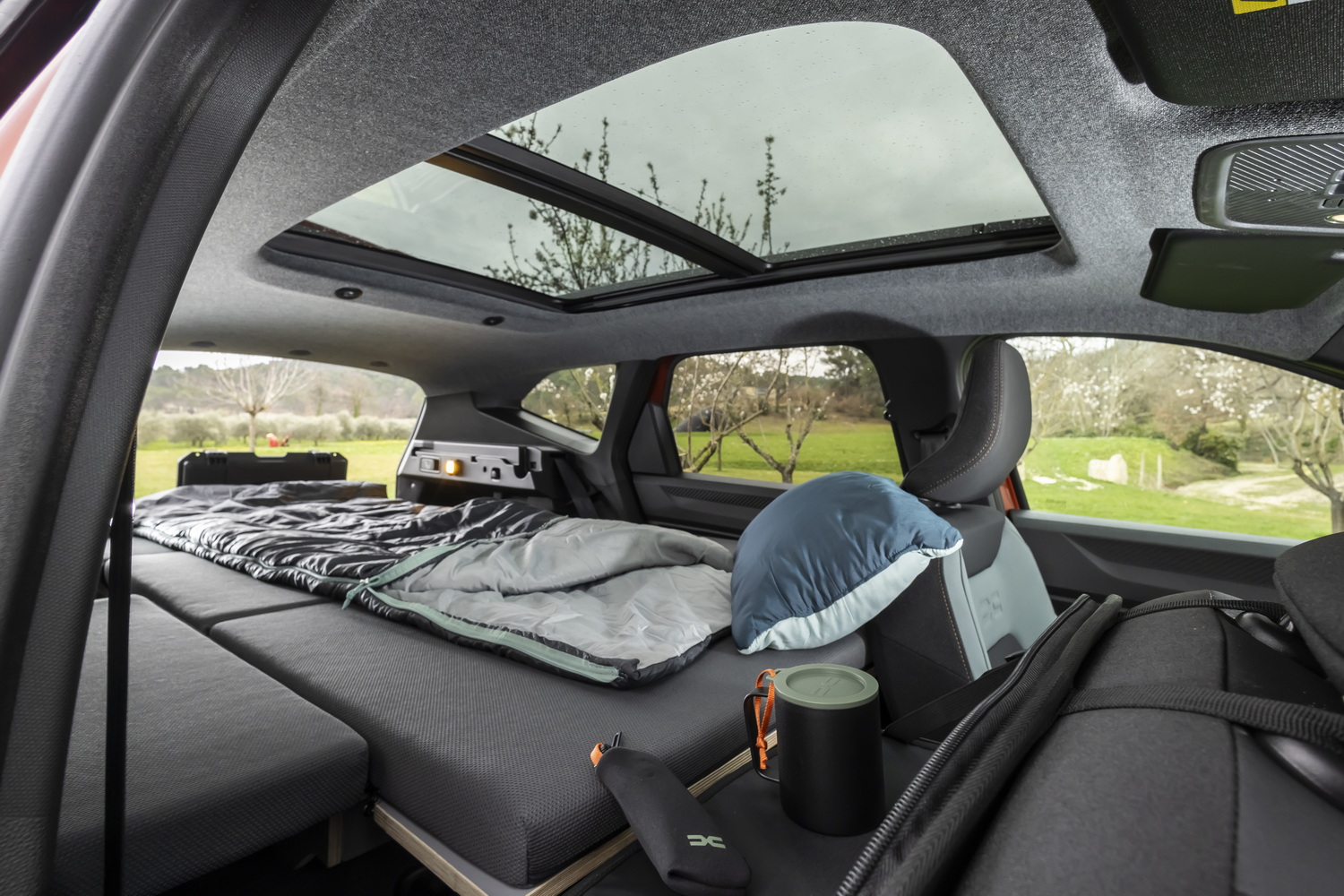
If you need even more practicality, well you can actually sleep in your Bigster. As with the Duster and Jogger, there's an optional 'Sleep Pack' which clips into the boot and unfolds (over folded back seats) into a 1.9-metre futon-style bed.
We've tried it in the Jogger and it's very comfortable, so with the Bigster's bigger cabin, it should be even better again. There's also a bespoke tent which can clip onto the Bigster's open boot. Maybe someone could design a portable toilet with a YouClip attachment?
Performance of the 2025 Dacia Bigster Hybrid 155
• Comfortable and springy ride quality
• Easy-going nature
• Gets noisy at high speeds
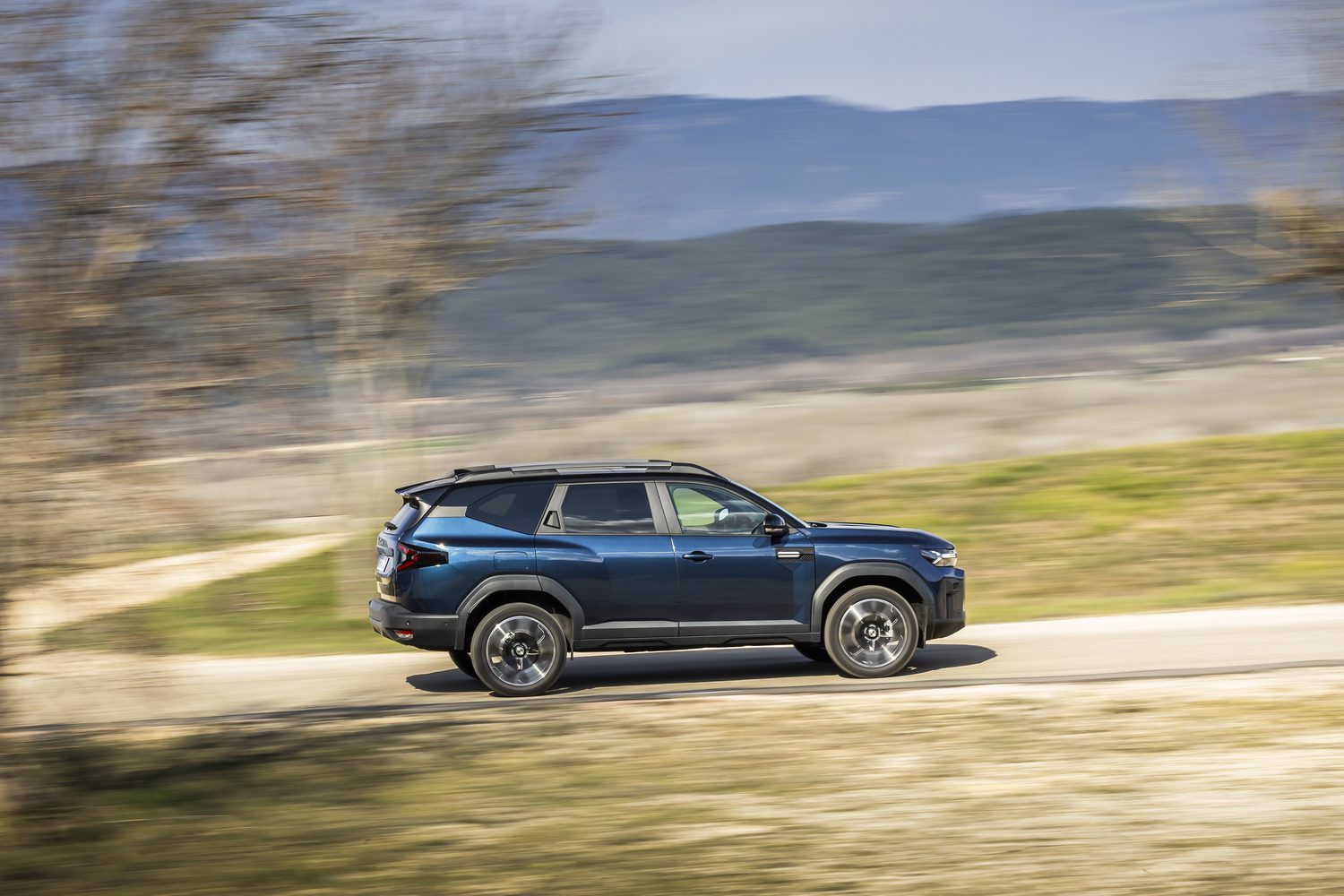
Dacia has clearly concentrated on making the Bigster easy-going to drive, so it has light, but accurate, steering and a generally soft and springy ride quality that only occasionally gets caught out by sharp transverse ridges.
Indeed, so soft is the suspension that the Bigster's big nose - and you can see almost all of the bonnet from the driver's seat - often bobs gently around, like a boat crossing a gentle chop, mid-harbour. That softness basically defines how the Bigster drives.
It's very definitely not set up for tight and twisty roads. When you try to get busy with the cornering, you'll find that soft front suspension needs a beat or two to settle before the Bigster will swing onto your chose line. It's not quite ponderous, but neither is it especially sharp.
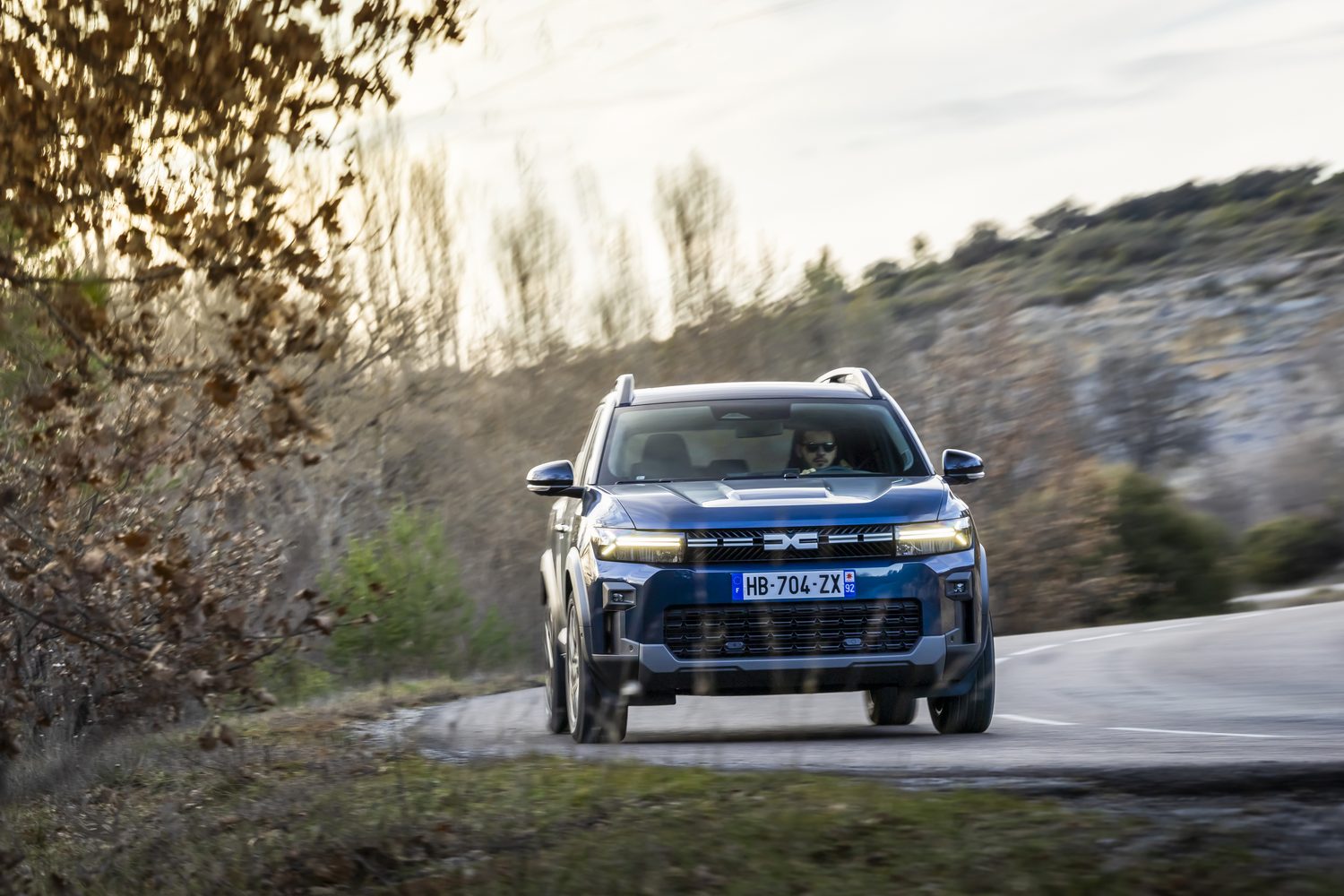
Then again, is it supposed to be? This is a car designed for family life, and for that you want comfort and refinement. For the most part, you get them. As noted, the Bigster's ride, certainly in this hybrid form, can occasionally be caught napping, but largely it's a car that trundles along very agreeably, knocking off a long journey with minimal fuss.
It also exudes a rugged sensation which feels very satisfying, a sign that Dacia still wants to be seen as an outdoorsy brand, sort of a more affordable European rival to Jeep and Land Rover. The Bigster underlines that effort and succeeds in having a personality from behind the wheel that feels somehow square and solid - possibly because the Bigster is only slightly taller than it is wide.
Performance is fine, if nothing more - 155hp doesn't seem like much for such a big car, and the combined torque of 172Nm for the engine and 205Nm for the electric motor never seems to raise much in the way of straight-line speed. However, the Bigster is notably light (just over 1,400kg in this hybrid form) by the standards of this class, and so it's never actually slow. As with the handling, it seems like a well-balanced car in performance terms.
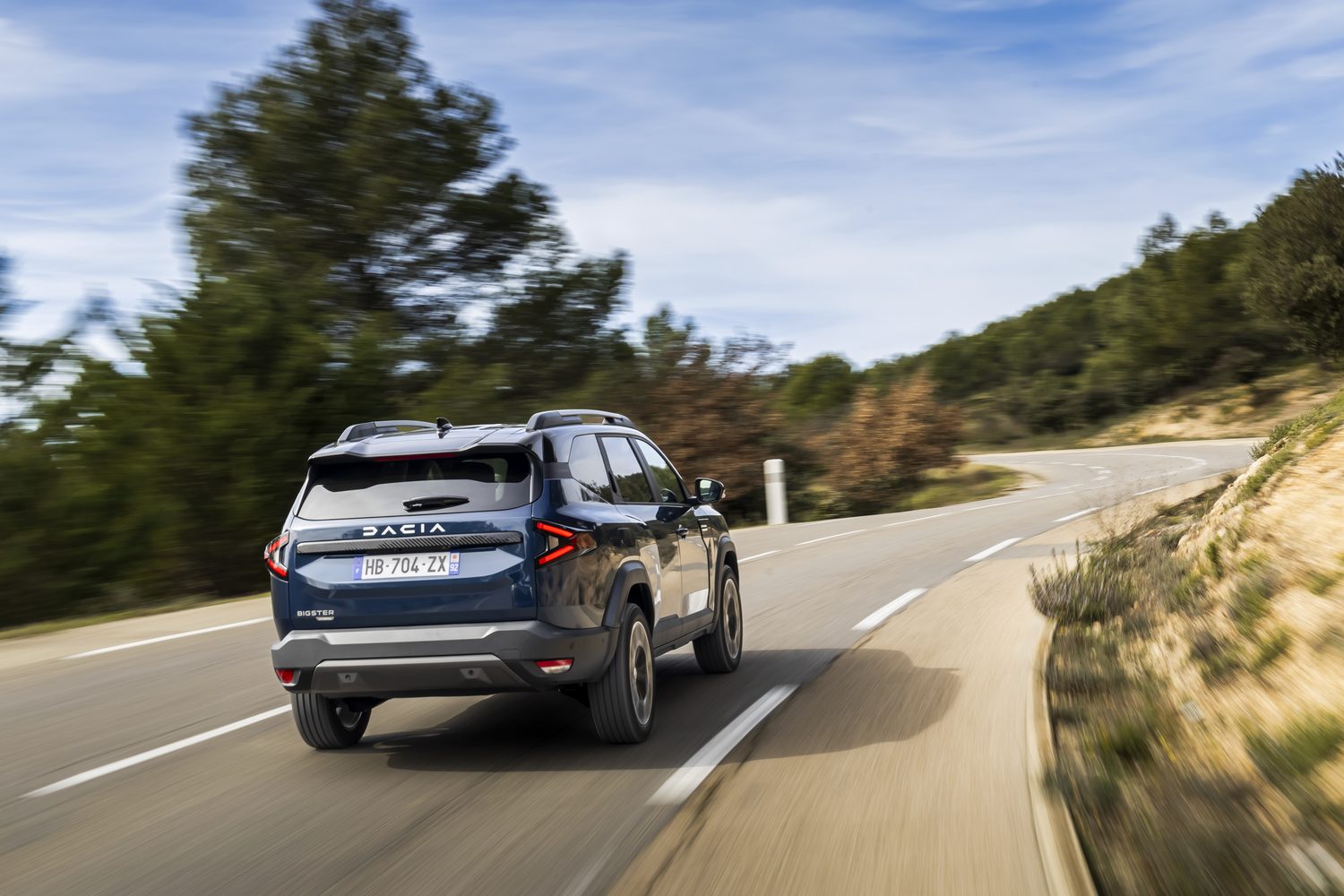
Its incredibly complex gearbox can sometimes leave the engine droning on a bit, especially on long uphill climbs, but otherwise refinement is fine until you build up to motorway speeds, at which point some tyre roar and wind noise come into play. Neither are at disastrous levels.
The Bigster has decent brakes, which feel fine to use, and there's a handy 'B' mode for the hybrid's automatic gearbox which gives a little more regenerative braking to charge up the battery.
There's also hill-descent control for some model grades, and for the 4x4 version. We didn't get a chance to try the Bigster on anything more challenging than a roughly-hewn dirt track, but with 220mm of ground clearance and the option of four-wheel drive, it should be more than sufficiently capable for most needs in the off-road arena.
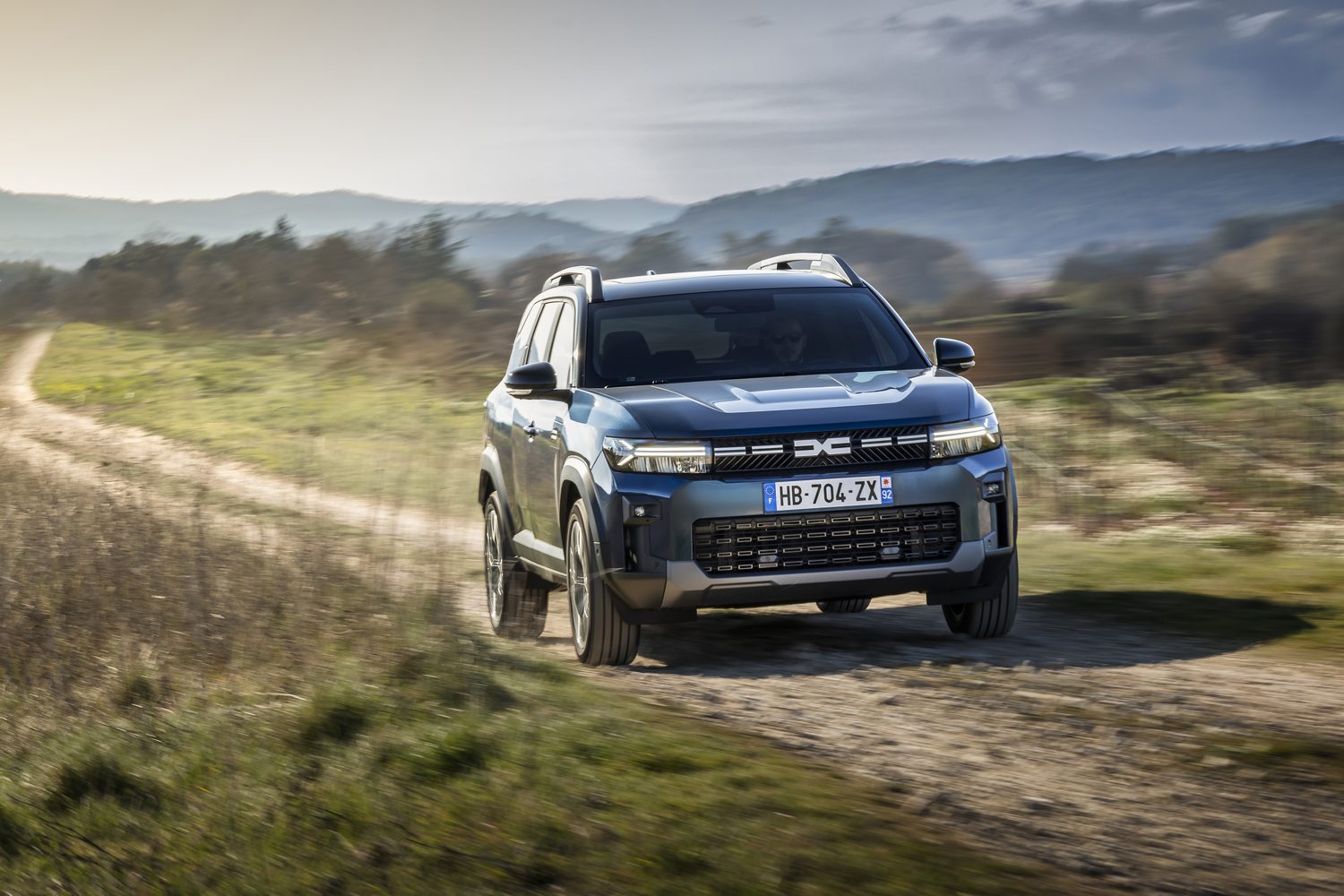
In terms of towing capacity, the Bigster Hybrid 155 can handle up to 1,000kg on a braked trailer, while the petrol mild-hybrid models can cope with 1,500kg.
Running Costs of the 2025 Dacia Bigster Hybrid 155
• Impressive fuel economy
• Surprisingly low emissions
• Only a three-year warranty

It's important to note that we drove the Bigster at the model's international launch in France, not far from the city of Marseilles. Why is that important? Because French roads have generally lower speed limits than Irish roads (motorways aside), with the maximum speed on country two-laners pegged at 90km/h, and the limit is often set to 80km/h or even lower.
This plays into the Bigster's hands as far as fuel economy is concerned, so while we were impressed with the 5.3 litres per 100km average we recorded over a mix of roads, we might need to stick a metaphorical pin in that until we get a Bigster at home in Ireland and put it to the test on more familiar roads.
That said, the 5.3 litres/100km figure is undeniably impressive, and we recorded an even better 5.1 litres per 100km on our second driving session, so the omens for a Bigster being cheap to run are good.
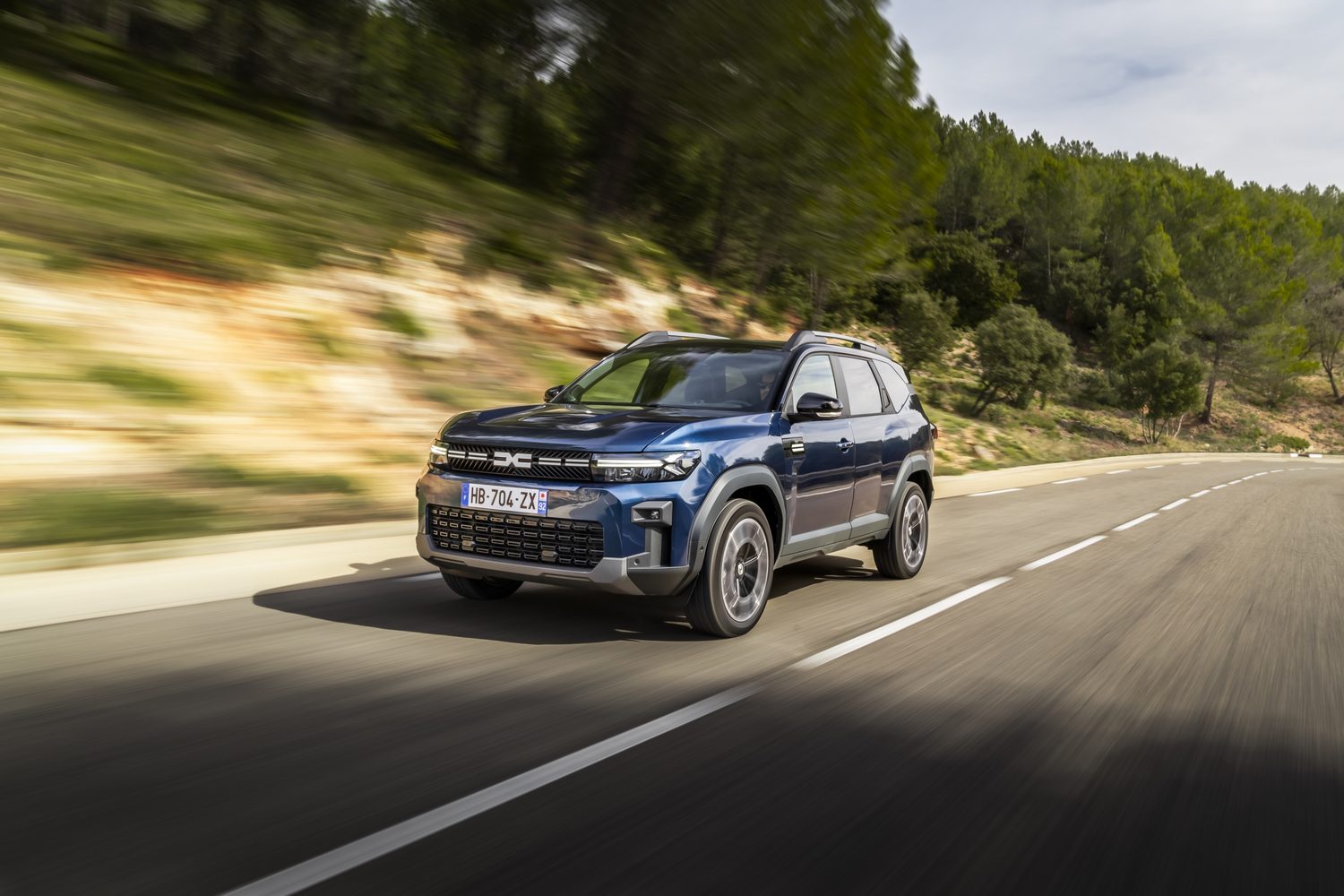
It's helped by another impressive figure, its 106g/km CO2 emissions, which are commendably low for a car this big, this square and this upright. It means that your annual motor tax bill for a hybrid Bigster will only be €60 more than someone driving an electric car.
Dacia currently only offers a three-year, 100,000km warranty for all of its products.
Irish Pricing & Rivals of the 2025 Dacia Bigster
• Will be cheaper than similarly-sized rivals
• Starting price of €29,990
• First Irish cars arrive in May
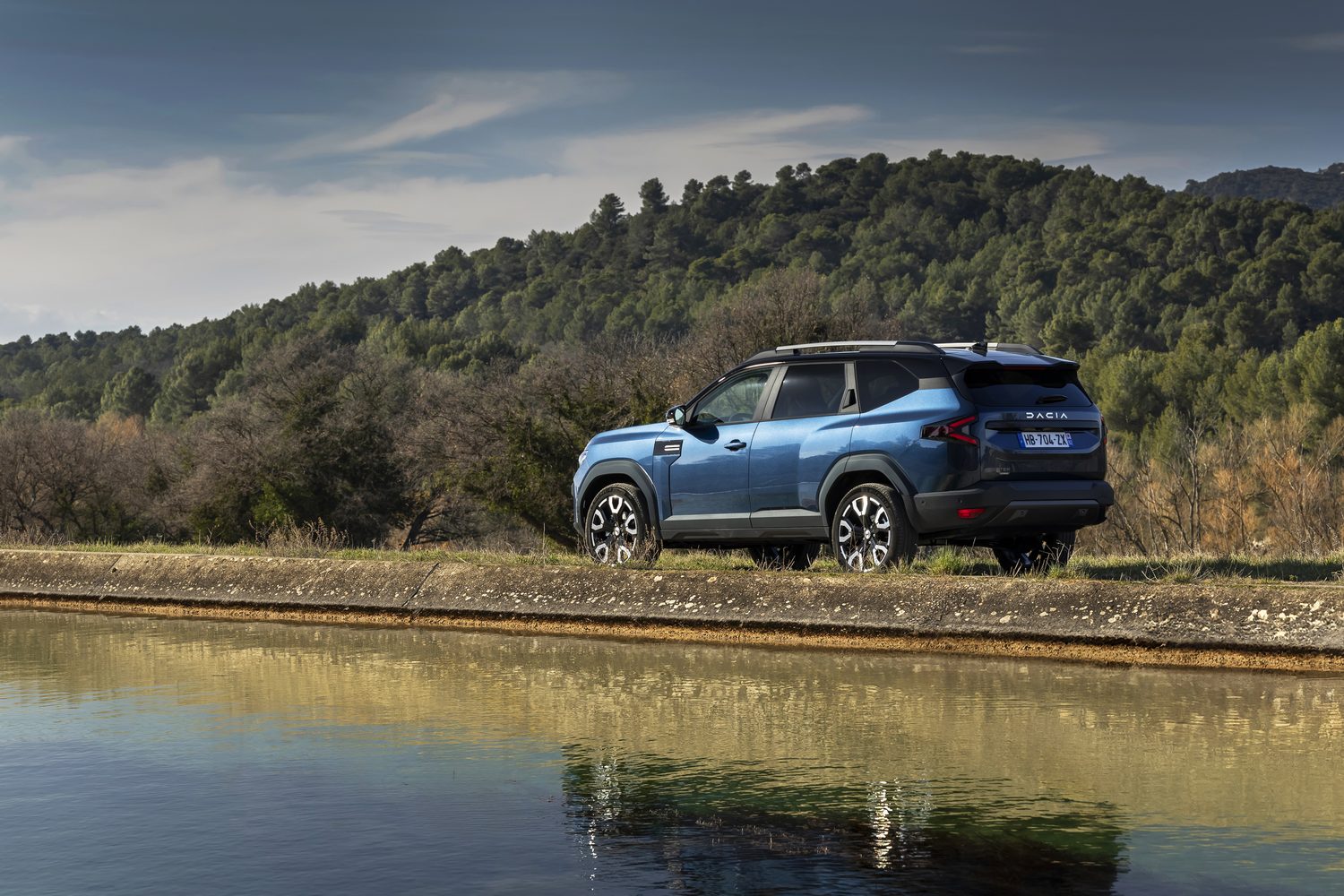
The Bigster in Ireland has a very tempting starting price of just €29,990 for the 1.2-litre 140hp mild-hybrid in Essential trim. That's a mere €4,000 more than the most basic Duster, which is far less impressive inside.
Basic spec includes the 10.1-inch touchscreen, Apple CarPlay, Android Auto, remote audio controls, a reversing camera and sensors, autonomous emergency braking, manual air conditioning and 17-inch alloy wheels.
On the options list will be equipment unheard of in other Dacias - an electric tailgate, a panoramic glass sunroof, an Arkamys sound system and electric adjustment for the driver's seat. Such notions!
If you want a four-wheel-drive Bigster, then the cheapest one is €34,690, while the most affordable Expression-spec version of the Hybrid 155 we've been testing here is €35,140. That's pricey by Dacia standards, but it's the guts of €10,000 less than a comparable rival hybrid.
In terms of the competition, Dacia couldn't be going up against opposition that's any tougher. It will be taking on the likes of the Hyundai Tucson - Ireland's best-selling car since 2016 - and the closely related Kia Sportage, plus the ever-popular likes of the Nissan Qashqai, VW Tiguan, Toyota RAV4 and Skoda Karoq.
Against such competition, the Bigster should enjoy a considerable price advantage (although our high-spec Journey test car costs €37,540), but will pickier C-segment buyers be swayed by the Dacia's combo of space and value? Given the enormous success of both the Sandero and Duster, it would be foolish to bet against it.
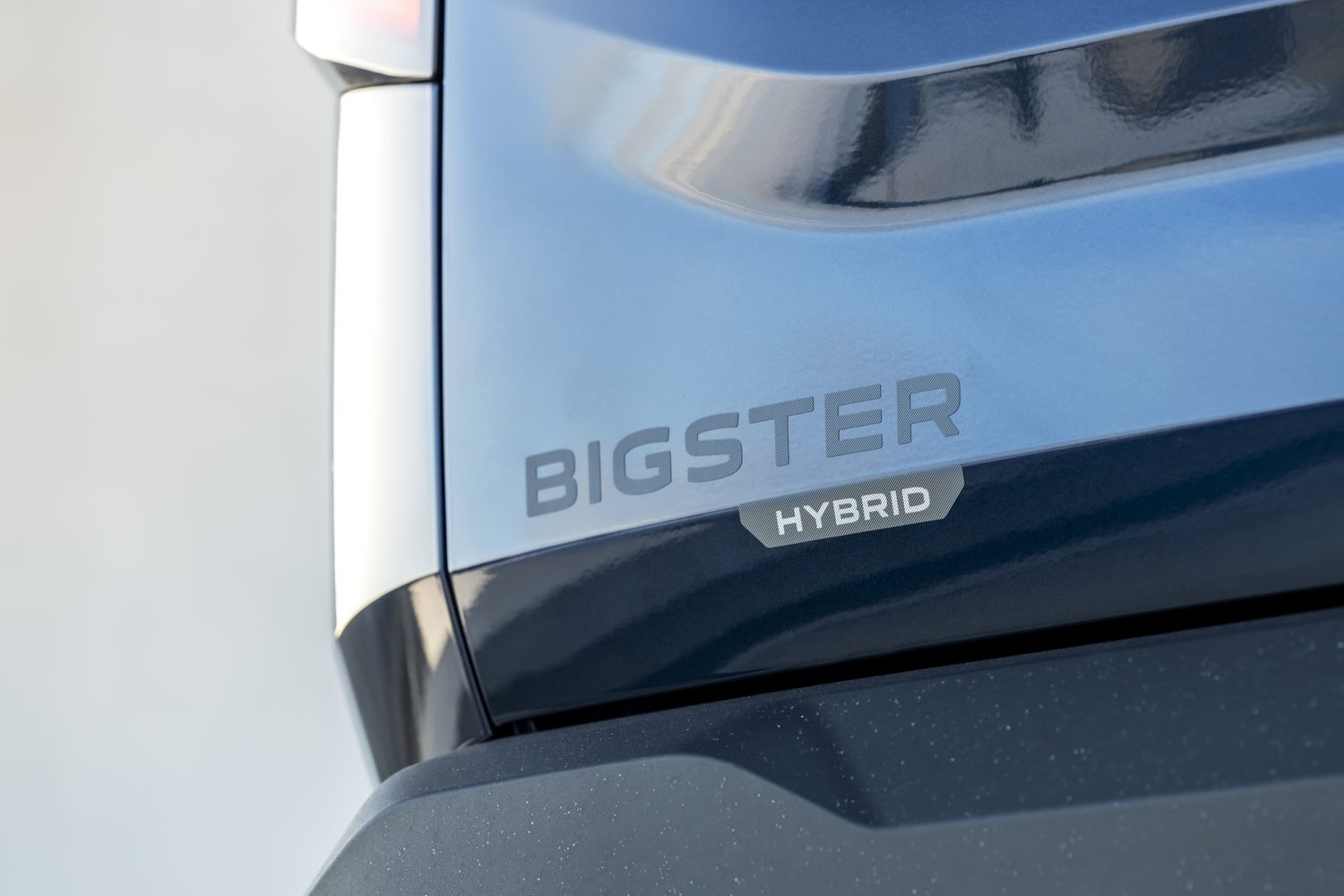
Engine options will include this hybrid version - expected to be the best seller - plus an entry-level turbocharged 1.2-litre three-cylinder petrol engine with mild-hybrid assistance, 140hp and a manual gearbox.
There will also be the option of a 130hp version of the same engine which is LPG-compatible and comes with an LPG tank under the boot floor. Dacia claims a combined fuel range of up to 1,000km with both tanks brimmed (although it's worth noting that you'll get close to that figure with the hybrid model).
There's a 4x4 version too, using the same 130hp engine and six-speed manual gearbox employed by the Duster. Next year, the Bigster will be the first Dacia to mix four-wheel drive with hybrid power, as it will gain a new 4x4 version with an electric motor driving the rear axle, which will also have an automatic gearbox.
Verdict - Should You Buy the 2025 Dacia Bigster Hybrid 155 Journey?
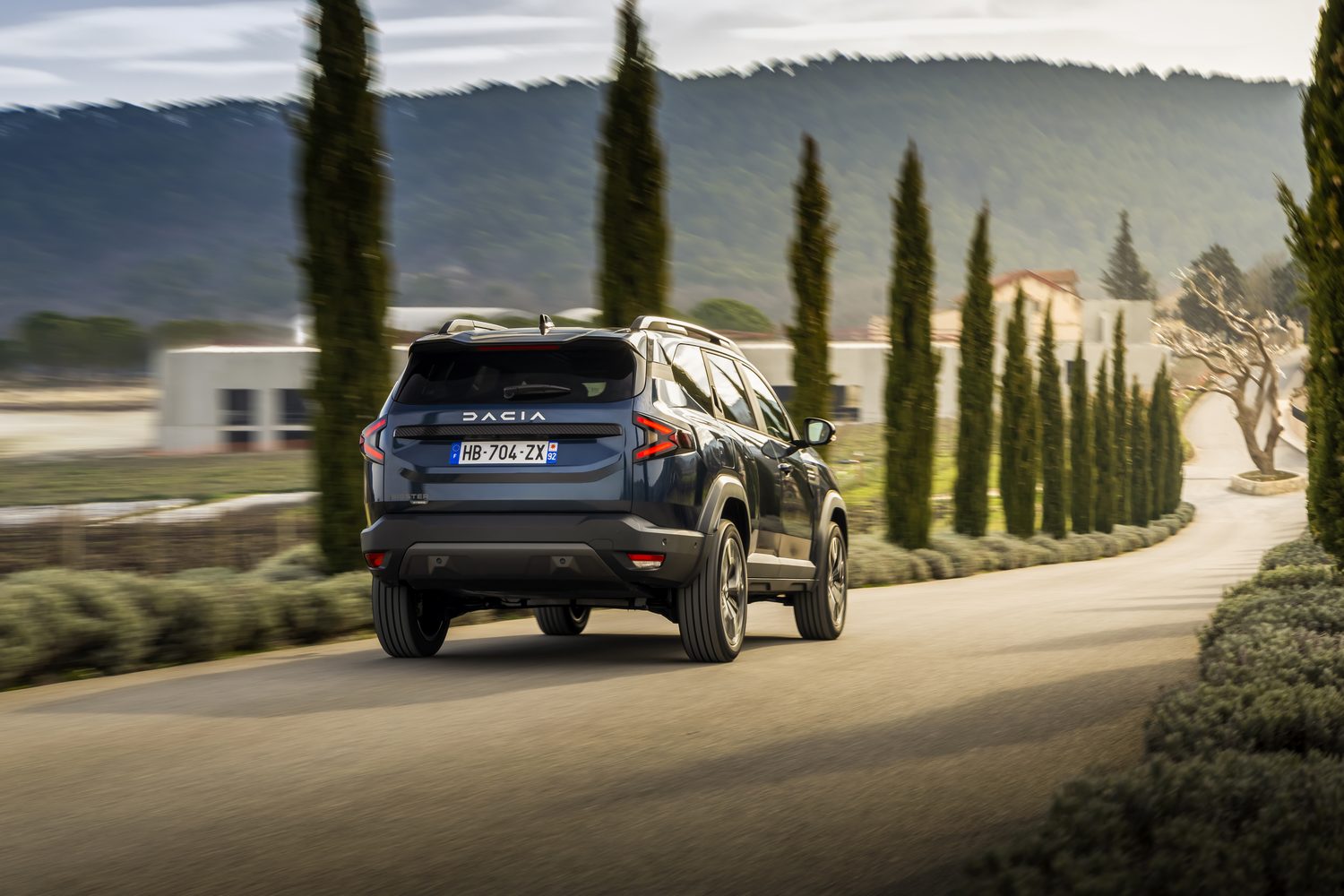
Yes - unquestionably. This is quite probably Dacia's best car yet, mixing traditional Dacia cost-saving and low running costs (and an impressively low kerb weight) with new-found levels of sophistication and comfort. It's no sports car to drive (did you expect it to be?) but it's comfortable, easy-going and really rather enjoyable. The enormous interior and boot space will be a boon for family life, while Dacia's reputation for reliability and longevity should keep it in that family for some time to come.
FAQs About the 2025 Dacia Bigster
How many child seats fit in the back of the Dacia Bigster?
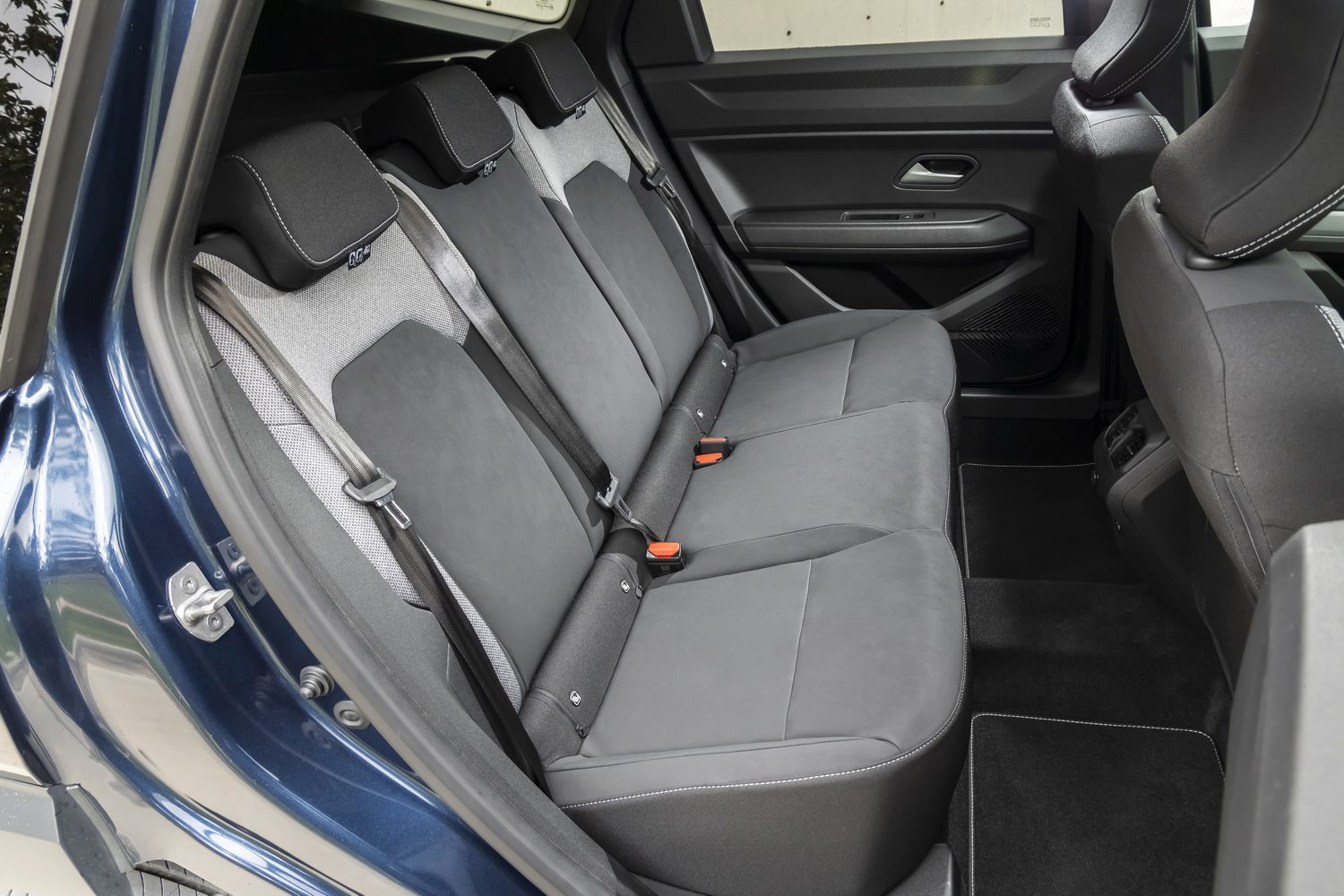
There are two ISOFIX points in the Bigster, both in the outer rear seats. However, there should be just about enough width in the centre rear seat for a booster cushion to slot in, using the seatbelt (and there's only a shallow transmission tunnel, which means more space for feet). Likewise, you can fit a child seat in the front passenger seat using the seatbelt.
Is the Dacia Bigster a seven-seater?
No, it's not and that may seem slightly odd given the massive boot space and the tall rear bodywork. You'd think that the Bigster would make a natural seven-seater, giving Dacia a bargain-priced rival to the likes of the Skoda Kodiaq and the VW Tayron.
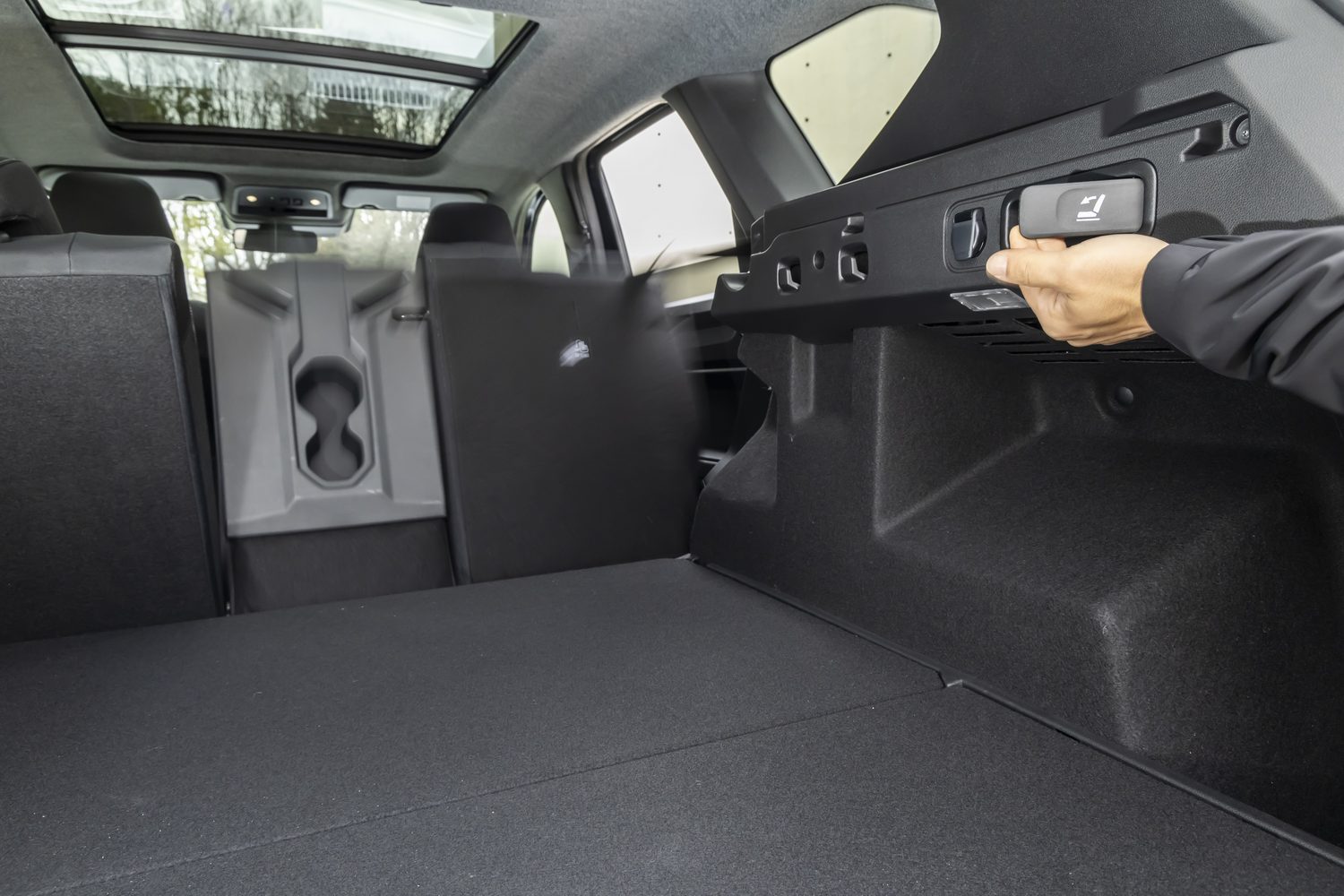
Why has Dacia not designed the Bigster with seven seats? The simple answer is the price. Fitting extra folding seats in the boot would have required significant investment in a new rear chassis structure, and new rear suspension too. Equally, it would have caused complications for the packaging of the hybrid's battery.
Dacia points out that this part of the market is 75 per cent five-seat models (there's no seven-seat Hyundai Tucson, for example) and so the company is happy to forego that 25 per cent who crave extra seats. Besides, there's always the Dacia Jogger...
Has the Dacia Bigster been assessed for safety by Euro NCAP?
No, and NCAP scores are often a sore spot where Dacias are concerned. Previously, a reluctance to fit high-end (and expensive) electronic safety aids, has seen Dacia's score poorly on the NCAP tests, even if - as the company avers - the cars are fundamentally safe in the event of an actual, physical crash.
The Bigster should score a little better - it includes the latest legislated-for safety systems such as autonomous emergency braking, speed limit warning, lane keeping steering and so on - but it will probably also fall short of a full five-star rating. As history shows, Dacia buyers don't seem to mind all that much.
Want to know more about the Dacia Bigster?
Is there anything else you'd like to know about the Dacia Bigster? Or anything you feel we haven't covered here? Then just head over to our Ask Us Anything section and, well, ask us anything. It's a free service and we'll do our best to answer your questions.

